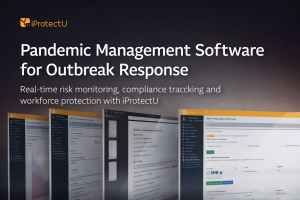Overview
The safety management of a school extends beyond its internal spaces. Outdoor areas, such as playgrounds and grounds, present numerous potential hazards. Play equipment can pose risks of falls, collisions, entrapment, and impact injuries. Ground surfaces and walkways, especially when wet or icy, can lead to slips, trips and falls. Trees and vegetation can be hazardous due to falling branches, loose bark, insect bites, and allergic reactions. School fencing and gates, if not maintained properly, can cause serious entrapment injuries, falls, and lead to unauthorised access. Additionally, buildings and structures may pose risks from falling debris or structural collapse. Traffic on and around school grounds can lead to road accidents and pedestrian collisions. Finally, lightning strikes can present a significant danger.
Risk Assessment
Risk assessment of playground equipment requires a thorough inspection of each piece of equipment. This involves checking for structural integrity, loose parts, sharp edges, and any signs of wear and tear.
Assessing ground surfaces involves completing a thorough inspection of school grounds which assesses pathways and surfaces for slip and trip hazards. Prioritise areas prone to waterlogging and seasonal hazards like fallen leaves and ice.
Completing a risk assessment of trees on school grounds, often referred to as a tree survey, involves a thorough examination of each tree by a qualified arborist.
This includes assessing the tree’s overall health, identifying any signs of disease or decay, checking for structural defects like cavities or fungal infections, and evaluating the potential for limb failure. They consider factors like the tree’s proximity to buildings, walkways, and play areas, as well as the potential impact of adverse weather conditions.

Risk assessment of electronic gates should evaluate mechanical and electrical components for hazards. Test gate operation, focusing on opening/closing mechanisms. Review security features and identify entrapment risks. Check for gaps in the gate’s structure and ensure sensor functionality.
Completing a risk assessment of exterior areas of buildings and structures on school grounds involves a thorough inspection of all buildings and structures, including walls, roofs, and any attached equipment. Identify potential hazards such as loose bricks or tiles, damaged gutters, and decaying woodwork. Pay attention to the structural integrity of the buildings. A window survey should be completed to check for broken glass, damaged frames, and loose fittings and assess the security of the windows.
A comprehensive assessment of traffic flow, parking, and pedestrian access points should identify collision risks during drop-off/pick-up times. Consider the site layout, vehicle numbers, and traffic calming measures.
Make risk assessment an easier process, with iProtectU Risk Assessment Software – we provide a comprehensive range of risk assessment types and templates to meet the needs of your educational establishment.
Health and Safety Training
Premises staff responsible for maintaining and managing school grounds require comprehensive health and safety training. This training should cover a range of topics, including playground and play equipment safety, tree safety, and hazard identification for slips, trips, and falls.
Additionally, staff should be trained in window safety, particularly in areas accessible to children, and the safe operation of electronic gates. A crucial component of this training is risk assessment, enabling staff to identify potential hazards, evaluate risks, and implement appropriate control measures to minimise harm.
By equipping staff with the necessary knowledge and skills, school leaders can significantly enhance the safety of their grounds and protect the well-being of students and staff alike.
Check out the iProtectU Learning and Development Software – it includes all the training resources you need, covering a wide range of subjects and topics.
Planned Preventative Maintenance
How can you be proactive to ensure a safe and secure outdoor learning environment?
Play equipment should be subject to weekly visual inspections by premises staff. There should be regular cleaning, timely repairs, lubrication, and replacement of damaged parts. Annual inspections should be conducted by a qualified inspector. Ground surfaces should be subject to weekly visual inspections by premises staff. Repair potholes, resurface damaged areas and clear debris. Regular weed control can prevent tripping hazards and damage to surfaces.
Trees and vegetation require an annual inspection by a qualified arborist to assess tree health, structural integrity, and potential hazards. Regular pruning by premises staff may be necessary. Fencing and gates should be subject to weekly visual inspections by premises staff. Check for damage, rust, and loose fittings. Ensure gate mechanisms and security measures are functioning correctly.
Outdoor furniture should be subject to weekly visual inspections by premises staff. Ensure to clean furniture regularly and repair/replace damaged furniture. Implement robust traffic management strategies if applicable. A comprehensive school window survey is essential to identify potential hazards and ensure the safety of occupants.
Additionally, the installation and maintenance of a lightning conductor is crucial for protecting the school building from lightning strikes.
By implementing a rigorous safety management programme, schools can significantly reduce the risk of accidents and injuries, extend the life of their outdoor facilities, and create a safe and enjoyable outdoor environment for all.









